Color Stucco can be applied on walls using the same tools used for painting. You can use paint rollers with different nib (fiber length) sizes to get different types of textures. We showcase a simple case study in this report.
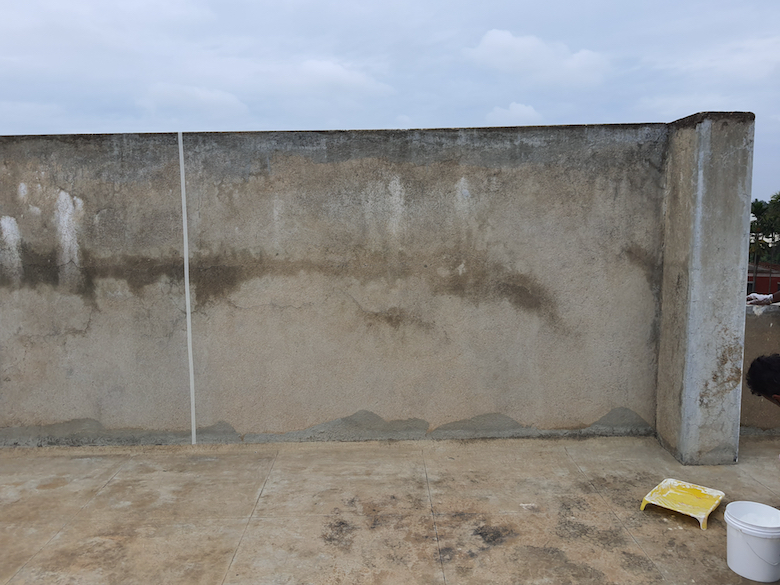
For the case study, we used the right side of the cement plastered wall, which was 6’8″ x 10′ in size. This was an old wall and was never painted during its 10 year of external exposure to the elements of weather. You can see deterioration of the old cement plaster, cracks in the wall and even some chipping.
The best practice would be to first pressure wash the wall and remove any loose structural material. This will also help in removal of any mildew. These steps are essential to have the best bonding and long life of any coating product applied on it. However, for the case study, we bypassed this step.
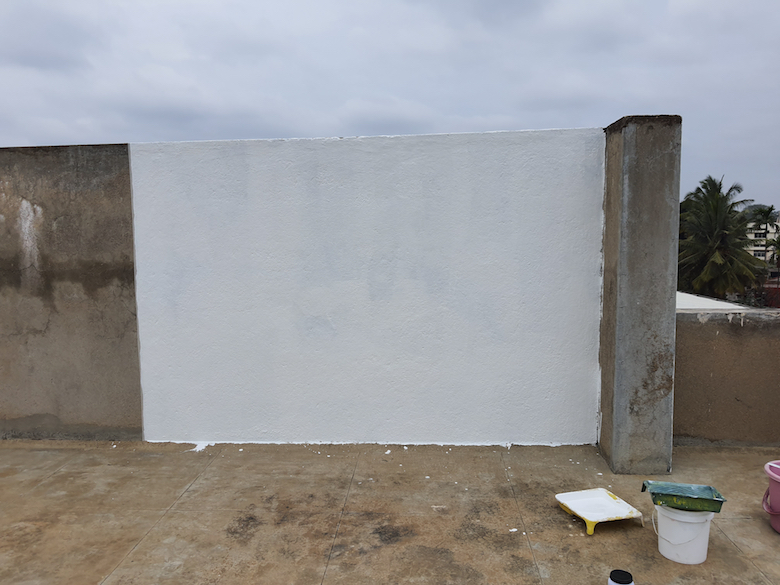
For the best results, a base coat is required on grey cement plaster prior to the application of Color Stucco. Color Stucco is a thick viscous material. Too much of this material is required if a base coat is not used. Using a base coat, the overall cost of Color Stucco is decreased, since less material has to be used. In the above, we have used 1 coat of Amazing Coat, LX-M-9105 Everest White color. In this test, the consumption was 32 g/sft for the 1st coat. On observation, you will see a uniform white color, but there are some visible lighter patches due to absorption of the paint in the cement plaster pores. However, a single coat is sufficient prior to application of Color Stucco.
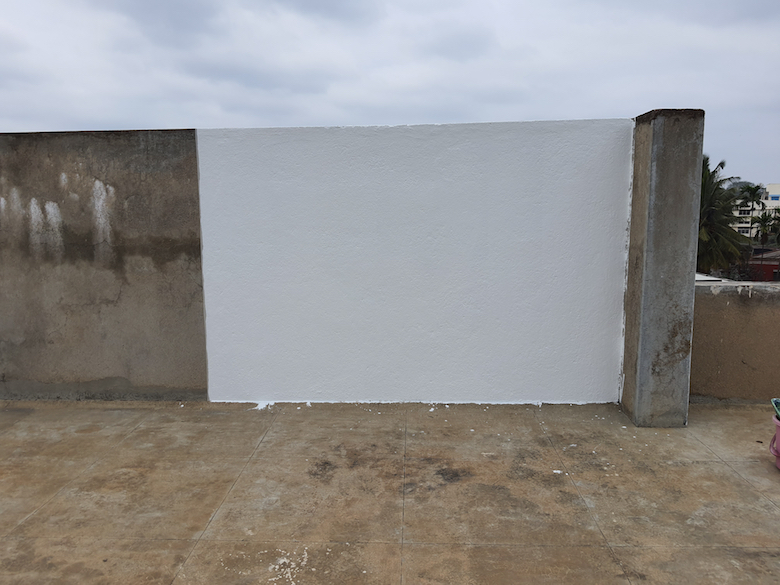
In the above photo, we have used a 2nd coat of Amazing Coat. The consumption for the second coat was 16 g/sft, which is about half that used for the first coat.
A quick rule of thumb for using Amazing Coat on never painted grey cement plaster is a consumption of about 30 g/sft for the 1st coat and about 15 g/sft for the 2nd coat. The total for 2 coats is about 45 to 50 g/sft.
When using Color Stucco on previously painted walls, a single coat of Amazing Coat with a consumption of about 15 g/sft is more than adequate.
Color Stucco is available in a variety of color options. A white base coat, such as LX-M-9105 Everest White (Amazing Coat), will work for all our Color Stucco colors. However, by using an Amazing Coat that is matched to the Color Stucco, we can get other color effects which are closer to the rich original color of Color Stucco. For every Color Stucco color, we have an equivalent Amazing Coat color. You can try out options with a matched base coat and also a white base coat.
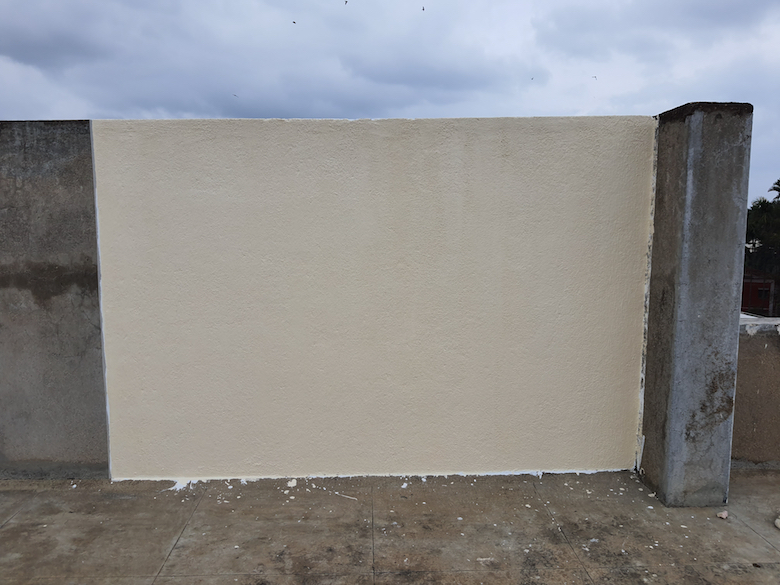
In the above photo, TX-9110 Arctic White (Color Stucco) was applied over the previous work (i.e with base coat). The material consumption was 82 g/sft. The TX-9110 Arctic White has a slight yellowish tinge.
A design rule of thumb is to compute Color Stucco requirement at about 100 g/sft.
The application was simple and any painter can do it. A paint roller is taken, dipped into the Color Stucco container to load the roller, and then applied on the wall. To get interesting texture patterns, after the Color Stucco was transferred to the wall, the roller was moved from bottom to top, to get a lift-off brush pattern (see the next photo).
Different texture effects can be created once the Color Stucco is transferred on to the walls. For example, the roller brush can be replaced with one that has a short nib (fiber length); a sponge can be used; a traditional hair brush (like that used for cleaning) can be used to dab the surface; trowels with notches can be used and so on.
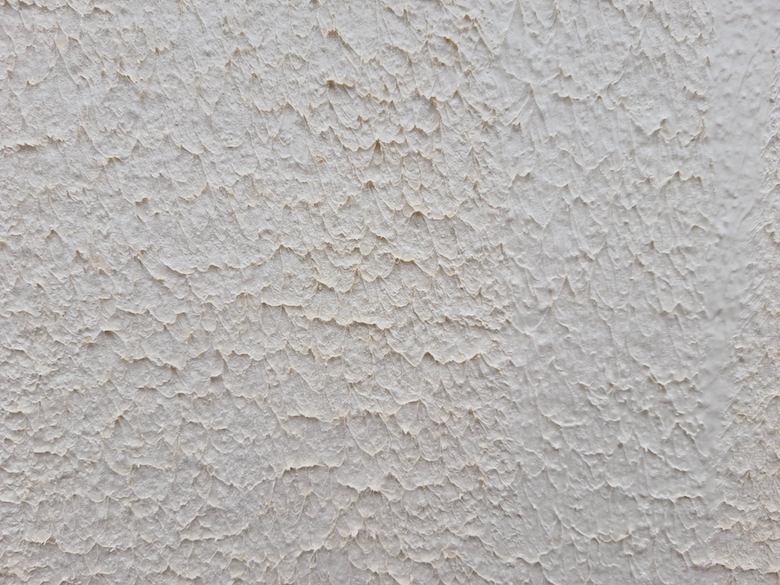
The above photo is a close up view of the Color Stucco applied in this project. As mentioned earlier, this effect was achieved with a simple paint roller.
Besides serving an aesthetic purpose, Color Stucco also has some remarkable benefits. Because the Color Stucco (1000 microns – 2000 microns) is a much thicker coating than traditional paints (75-100 microns), it is able to cover up cracks and defects in the cement plaster. This advantage enables the application of Color Stucco directly on rough grey cement plaster, thereby avoiding the use of a 5 mm fine plaster layer, which is very much required for a quality painting. Traditional painting requires a base coat and at least a minimum of two coats of finishing paint, which means a workman has to apply a minimum of 3 coats on the wall. Think of this as 3 work steps. On the other hand, Color Stucco needs just 1 coat on the wall, which saves a lot of time and labor.
Color Stucco has the unique ability to bond to walls with exceptional adhesion. This actually offers structural protection to the underlying cement plaster from erosion and damage due to the elements of weather – wind sand blasting and rain. So, Color Stucco is more than just beauty, it is functional.
